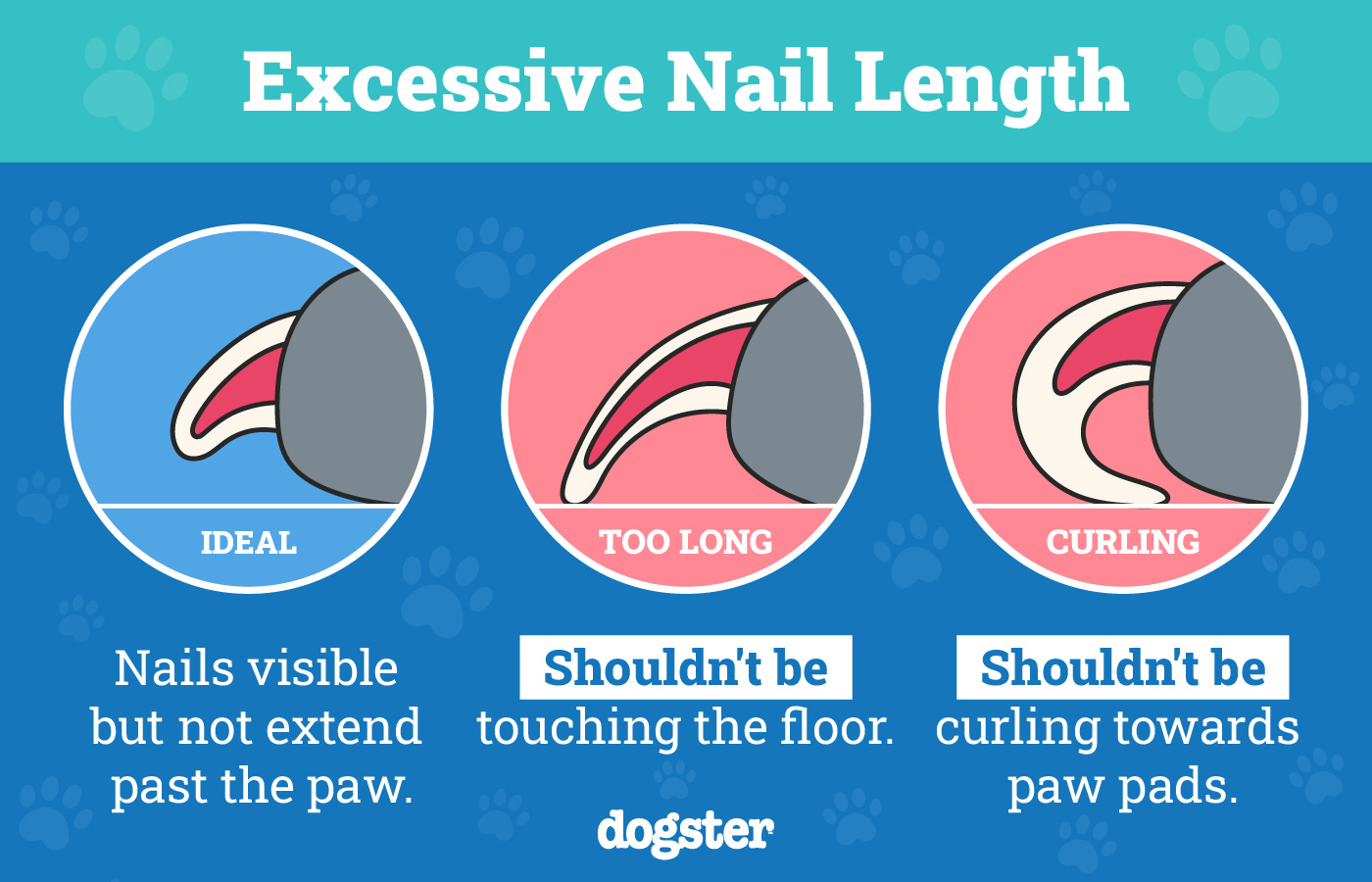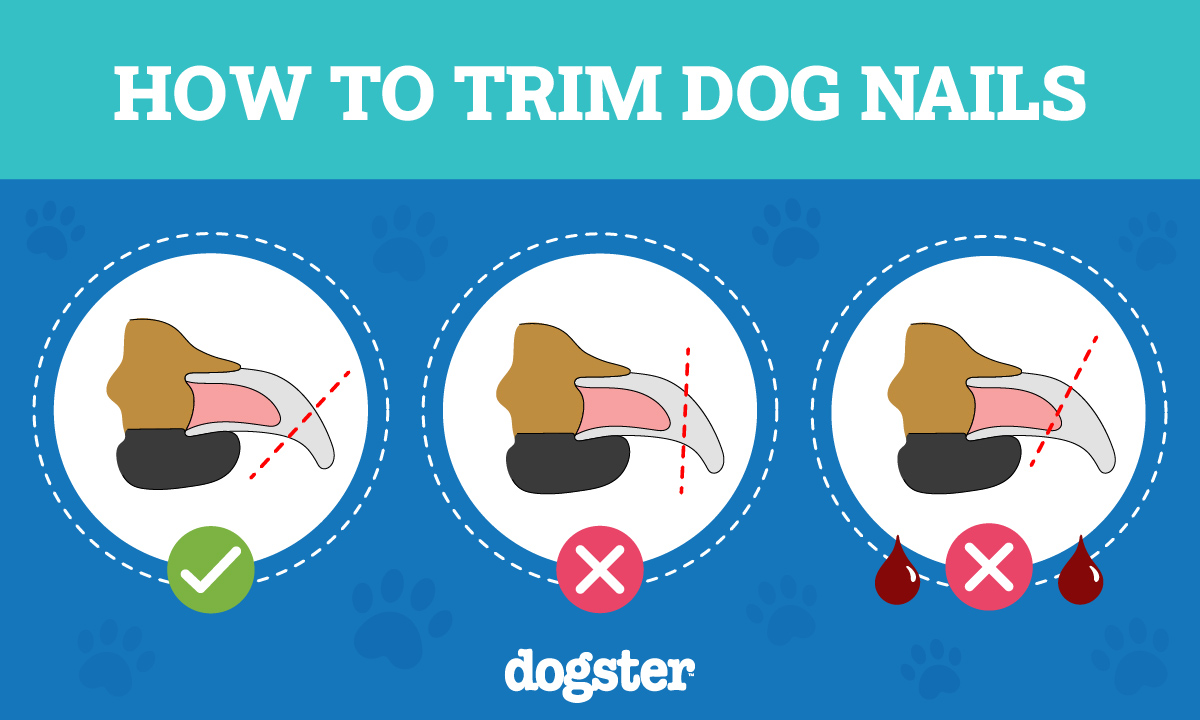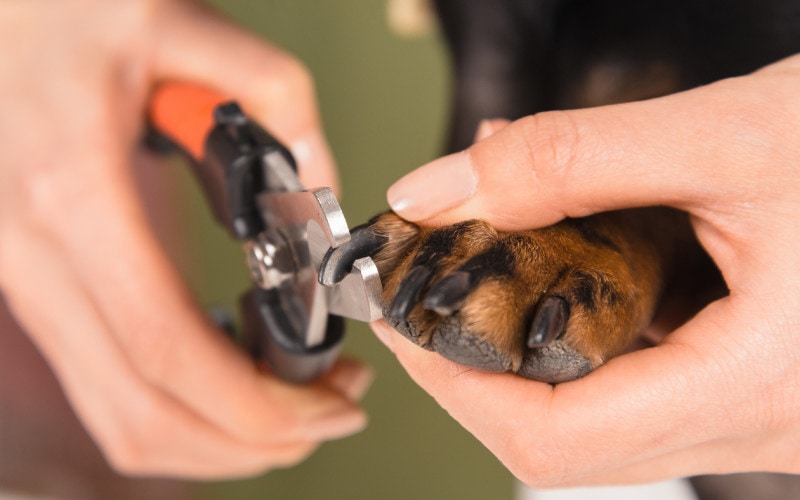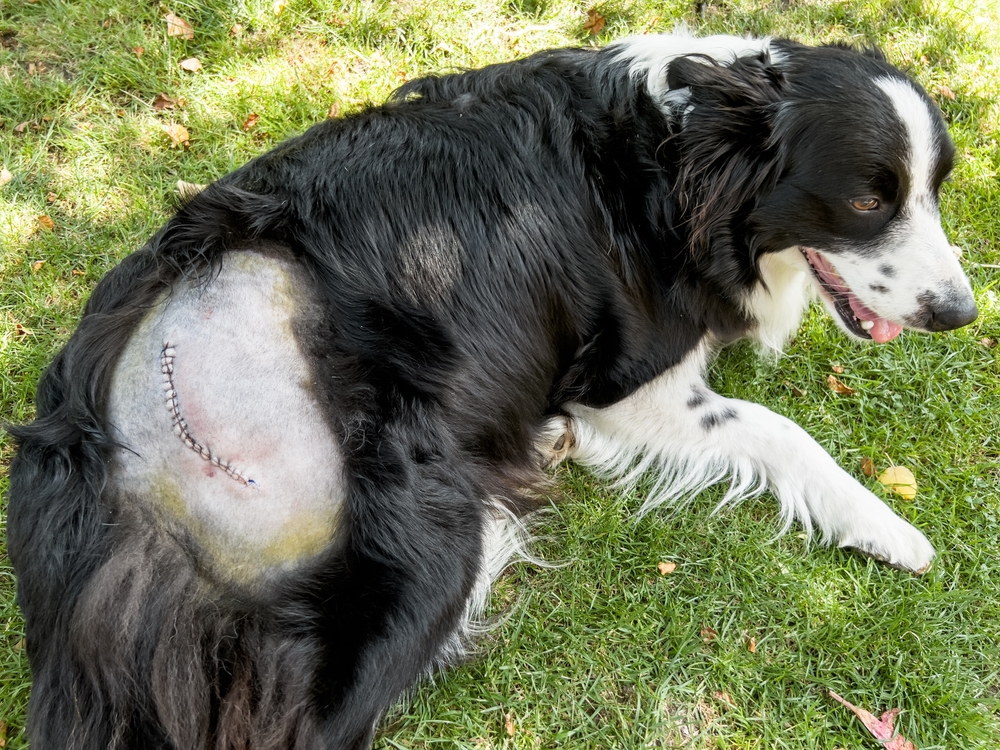For us people, we cut our nails for various reasons, but we never let them get out of hand. However, our canine companions do not have the luxury of grabbing some nail clippers and cutting their own nails. So, how often should you cut your dog’s nails?
On average, a dog’s nails need to be trimmed every 4–6 weeks. But there are a lot of things that can influence this. A better rule of thumb might be to check your dog’s nails every 4–6 weeks and then decide what to do.
Learn what long, short, and normal nails look like on your dog. And keep in mind this can look different on different dogs because dog feet come in a lot of different shapes and sizes. Know your dog’s feet!
Why Some Dogs’ Nails Differ
As a general rule of thumb (pun intended), toenails should skim just above the ground when your dog puts their foot down. Some dogs may need their nails to be trimmed more frequently, especially if they do not walk a lot and have flat feet that grind their nails into the ground. Other dogs might need to wait longer than six weeks for a trim. For example, many dogs wear their nails down by walking on concrete or running around a whole bunch.
One common scenario with older dogs is that they drag their back toes on the carpet because they do not pick up their hindlegs high enough, often because of arthritis or reduced range of motion in their knees or hips.
Even if your dog wears down most of their nails, it is important to check every single one. Not all their nails will be worn down evenly, and if not monitored, these nails can quickly sneak up on you and overgrow, crack, or otherwise become a problem.

Long Nail Problems
Very long nails can curve around and grow backward and in-on-themselves, digging into the skin surrounding the nail. When the nail starts to grow into the surrounding tissue, it creates a painful wound that easily gets infected. Plus, once a nail is that long, it is difficult to trim because it has doubled up on itself, and there is almost no space to insert the clippers to make the cut.
Extremely long toenails can also create levers between the ground and the toes, pushing the toes into uncomfortable angles as the dogs walk or run. These extra-long nails are painful to walk on and can make it difficult to walk on slippery surfaces, such as hardwood floors.
Long nails can also grow into the shape of a hook that is perfect for getting caught on collars, furniture, branches, and just about any hard object. This can leave your dog hopping around on three legs with their foot stuck on their collar. Or, more likely, they will rip their hooked nail off, which hurts and is often a bloody mess.

Short Nail Problems
If your dog’s nails are worn down short but get a nail clipping, the nails may get trimmed too short.
An over-clipped nail happens when the cut is below the quick of the nail. The nail bed always bleeds a lot and is very painful. So, it is important to check each nail before you clip it to make sure it is not too short already.
A nail bed that is repeatedly exposed can become infected. In extreme cases, a dog that overwears their nails plus gets nail trims can end up with infected nails. The quick of the nail is very close to the bone in a dog’s toe so infection can spread very quickly from the nail to the bone if not treated properly.

Other Problems with Your Dogs’ Nails
Sometimes if a nail gets caught or is hit especially hard, it can crack halfway and end up hanging off the nail bed. It then moves with each painful step and can create a huge problem for your dog.
If this happens, the nail needs to be clipped or pulled off immediately. Unfortunately, this is often a two (or three or four) person operation because the nail is often very tightly adhered to the nail bed even though it is mobile, and the dog often will not let you touch it without crying out in pain and squirming. A vet can help.
Waiting for the nail to grow out and fall off only works if it is not too loose and painful, which rarely happens, but it is better to get it off. Often this type of injury is too painful not to be treated immediately.
One nail that can be overlooked is the dewclaw, which sits a few inches up the leg above the foot. It is separate from the other toes on the ground. The dewclaw can get caught and torn, especially if it is too long. It can easily be overlooked and overgrown, in which case it usually curls around on itself and digs into the skin.
A vet will be able to advise you on the best course of action to ensure the well-being of your pet.
If you need to speak with a vet but can’t get to one, head over to PangoVet. It’s an online service where you can talk to a vet online and get the personalized advice you need for your pet — all at an affordable price!
Tips for Clipping Nails
If your dog tolerates it and/or you are good at holding your dog still (so they don’t flinch while you cut their nails), you can definitely trim your dog’s nails at home. But many people get a professional groomer or their vet to do it.
If you do trim your dog’s nails at home, there are some tricks that might make it easier and less stressful, but not every trick works for every dog.
- You might be able to use peanut butter as a distraction, but only if your dog is food-driven.
- Trim one or two toes a day, as long as your dog doesn’t catch on. While this method will take longer, it is effective.
- Your dog might like having their nails filed better than clipped. Just remember, if your dog hates it, if you are too nervous, or if you cannot physically restrain your dog, there are professionals who can help.

What If I Cut the Nails Too Short?
One thing to keep in mind if you do clip your dog’s nails is it’s not a matter of IF you cut your dog’s nail too short, but it’s a matter of WHEN you cut their nail too short.
So, when you inevitably cut a nail too short, the first thing to do is not panic. It is a very emotional experience for everyone; it hurts your dog and by extension hurts your heart, and it always bleeds quite a bit. Here are some things to keep in mind:
- Remind yourself to calm down and reassure your dog—be brave for them.
- Keep them from running around, spreading blood everywhere, and aggravating the bleeding nail with movement. Put them in their crate or cuddle them on your lap while you both calm down and wait it out.
- Avoid applying pressure. Applying pressure to a cut nail does not work, mostly because it hurts so much the dog will not let you hold their toe, but also because the hard nail surrounding the quick prevents the pressure from helping the clot form.
- There are powders specifically designed to help slow bleeding nails, which you can get at your pet store. But they can sometimes sting, so if your dog knows about the stinging powder, they can be hard to apply. If you do have the powder and your dog lets you, just keep gently tapping the powder onto the center of the cut quickly until the bleeding stops.
- If the nail is still bleeding after 10 minutes or so, contact your vet, so they can look and make sure something else isn’t going on. It is also a good idea to double-check the nail two or three days later to make sure infection has not set in.
Final Thoughts
There you have it! We hope you have gained some insight into when you should cut your dog’s nails. In general, the best thing to do is to check all your dogs’ nails every 4–6 weeks and get to know what they look like when they are long, short, and perfect.
However, if you think your dog’s nails need some trimming and you feel a bit uncomfortable doing it, reach out to your vet or a professional dog groomer to get the job done properly.
See also:
- What Happens If You Don’t Cut Your Dog’s Nails? Vet-Approved Facts & FAQ
- How to Trim Puppy Nails: Vet-Approved Step-by-Step Guide
Featured Image Credit: Duet PandG, Shutterstock













